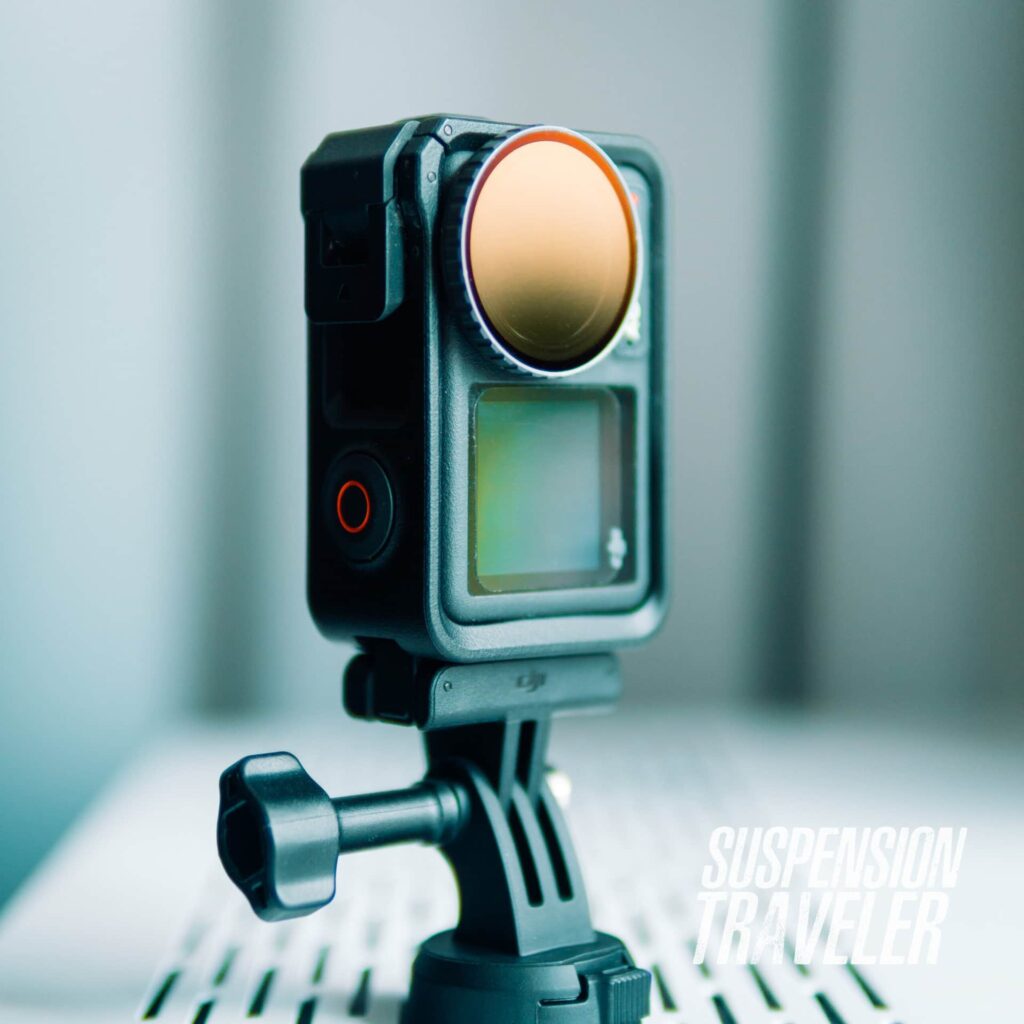The DJI Osmo Action 4 launched and this action camera REALLY performs. DJI sent me the Osmo Action 4 early to test and review in-depth, so I’ve had some time with it filming downhill mountain biking videos.
And let me tell you:
This thing is a huge step up from the Osmo Action 3!
PROS
- Amazing, stable quality at 4K.
- Balanced exposure even in difficult lighting.
- Excellent color reproduction in 10-Bit.
- D-Log M color profile for easy color grading.
- Magnetic mounts (maintains perfect angle).
- Countless first and third-party accessories.
- Touch screen front and back.
- Removable battery and lens cover.
- Long battery life.
- PRO video settings (ISO, EV, Shutter, Sharpness, etc.)
- Widest FOV of non-360 cams.
CONS
- Price increase from the previous model. (Justifiable by the performance increase.)
- Mandatory DJI MIMO app, that’s not in the Android app store
- Slightly shorter battery life than the Action 3, similar to the old HDR mode.
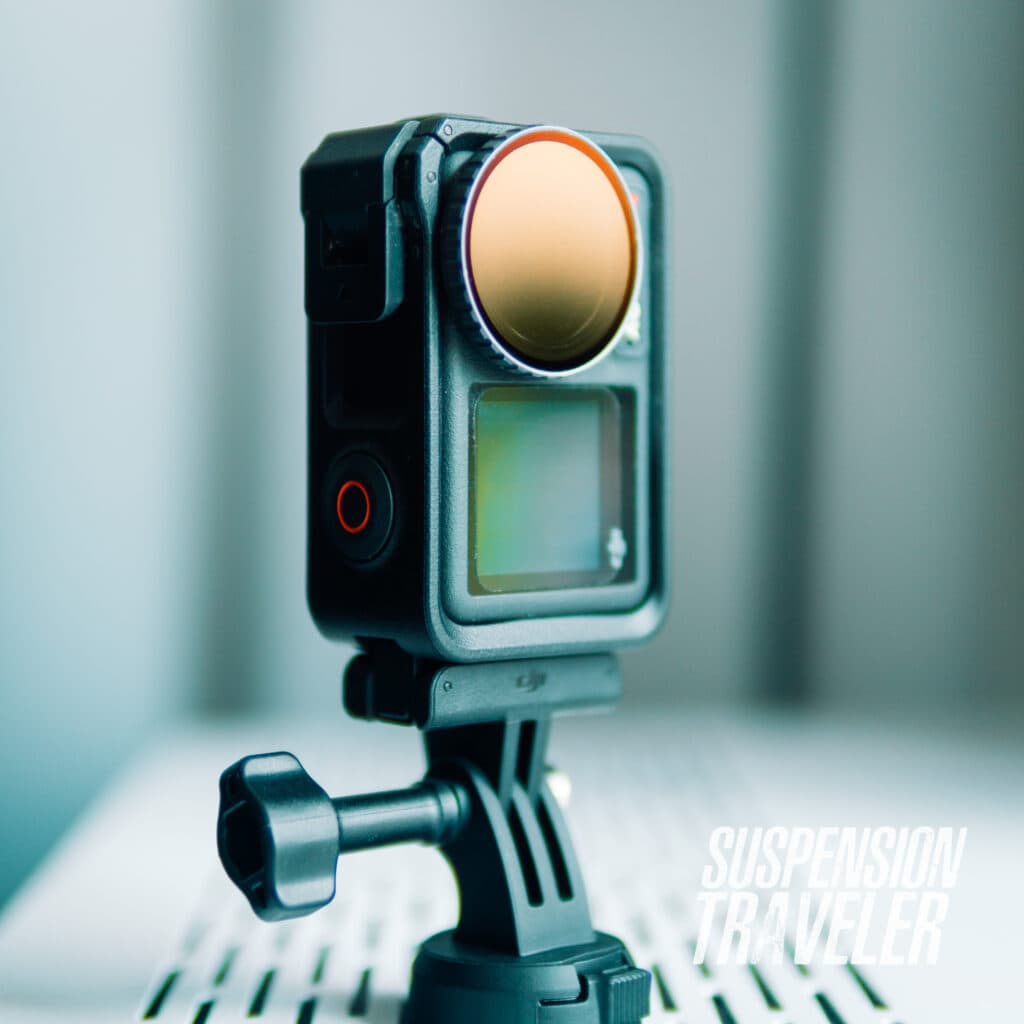
I’ve published over 100 mountain biking POV videos on the Suspension Traveler channel using various action cameras. So, I don’t say this lightly:
The DJI Osmo Action 4 might just be the perfect action camera package.
It’s definitely my overall best action cam for MTB. It seems like DJI went on the internet and looked at all the issues people had with the Osmo Action 3 and also the GoPro Hero 11 – and then just solved all of those problems with this camera.
The Specs
But you wouldn’t be able to tell from the same-looking housing or even the updated spec sheet:
- New 1/1.3” Sensor f2.8
- 4K resolution
- 240fps slow motion
- 155° Field of View
- Rocksteady 3.0+ Stabilization
- Better HDR
- 10-Bit Color Depth (in all color profiles)
- D-Log M
- 4K Native vertical filming
- Low-light Mode
- 120+ min battery life
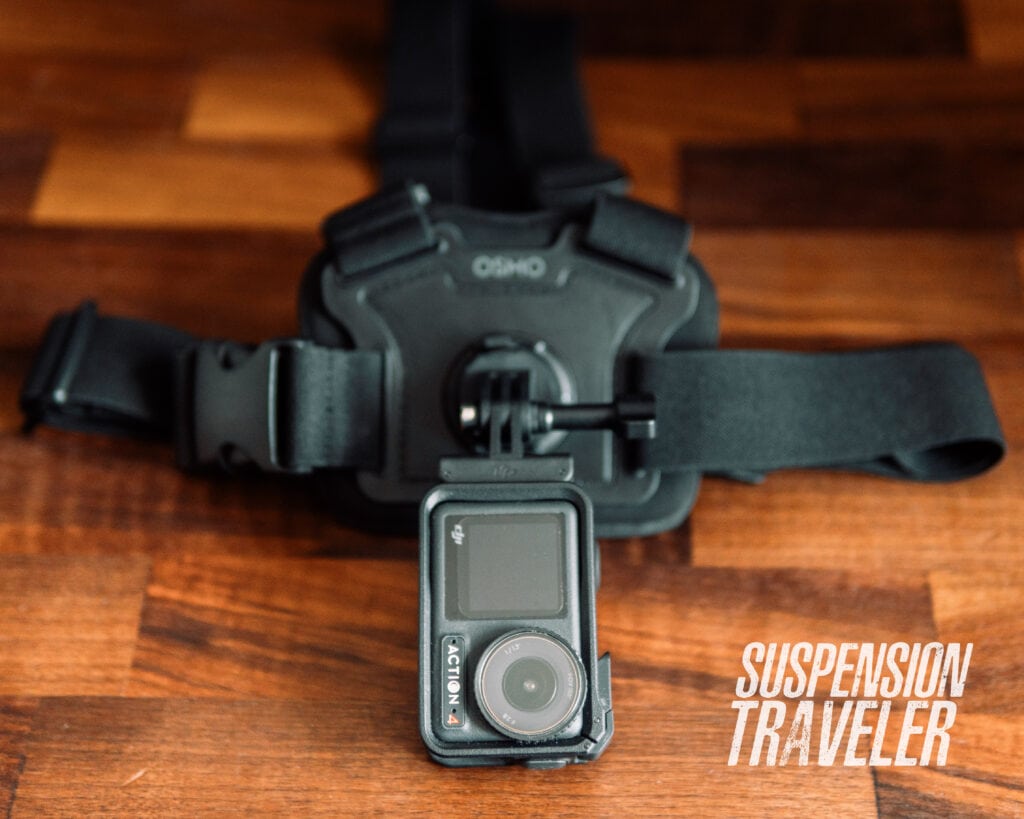
It doesn’t look like much on paper, but this camera is a giant leap above its predecessor! Let’s quickly get into the pros and cons before diving into more detail and example MTB footage further down.
Should you upgrade?
For anyone with an Osmo Action 3 or GoPro Hero 11 (or comparable), this is one to skip for you. While the improved quality and settings are amazing, the benefits over the current models are not worth the price for most.
Especially since the OA3 got an HDR mode, it’s among the very best (if not the best) action cameras on the market.
Who this camera is for
For anyone looking to upgrade from a DJI Action 2, GoPro Hero 9 or older, this is the camera you’ve been waiting for! It’s arguably the best upgrade you can make (if you’re not looking for a 360-camera). The differences are huge to those older models. Colors, stabilization, exposure, usability, and battery life are all best-in-class.
And on top of all that, if you don’t want to mess around with manual PRO camera settings for the OA4, its automatic settings will get you cinematic footage too! (Something I wouldn’t have recommended before)
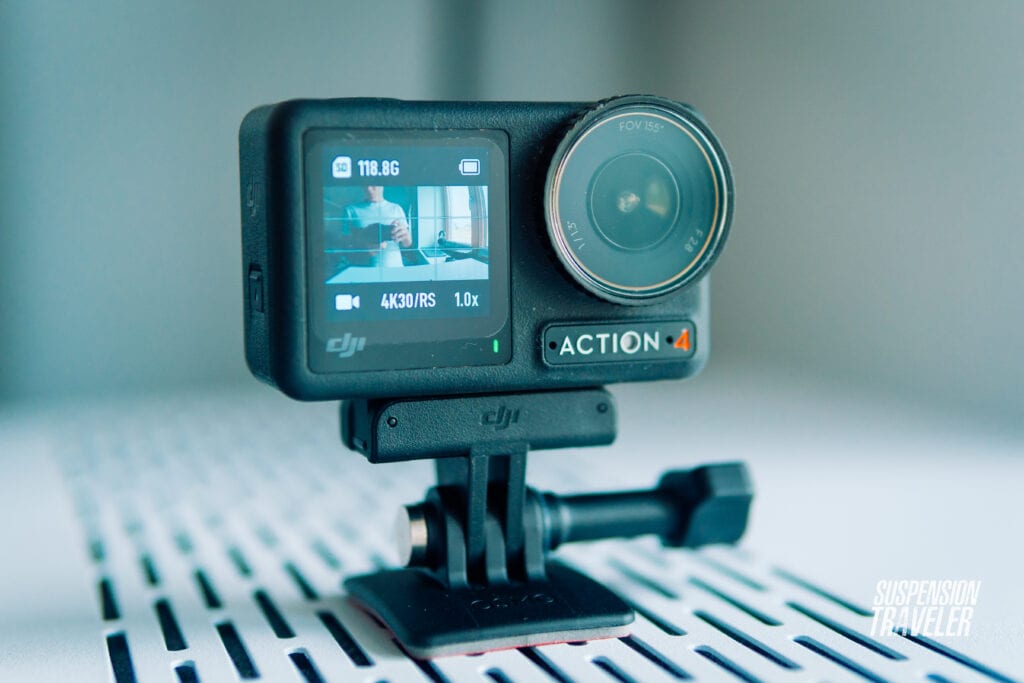
Check prices or look for current deals:
Video Quality
I managed to get stunning POV clips very easily with this camera. The automatic settings are actually usable. And if you know how to use the settings, you can get epic cinematic shots.
With this camera, we’re starting to move further away from the old limitation that came with the tiny form factor of action cams. Low-resolution, grainy, overexposed shots are a thing of the past. And the OA4 blew the doors wide open.
Bigger Sensor & Dynamic Range
Finally, we got a bigger sensor than the 1/1.7″ sensor the top action cameras had for so many years. Why does this matter? The bigger the sensor, the faster the image quality improves – all else being equal.
Higher dynamic range, better low-light performance and more details are the main benefits of larger sensor sizes.
This is especially noticeable in difficult, high-contrast situations like a forest on a sunny day (typical when mountain biking – see videos).
Highlights are not over-exposed, while shadows are deeper and detail-rich. On top of that in low light, a higher ISO is now usable without destroying the image with grain and noise.
When using my recommended settings for the Osmo Action 4, it’s regularly getting into the ISO 400 range. Take a look at the video below. It was shot on a cloudy day using an ND8 filter – which made it even darker than it was.
Improved Low-Light Performance
Not only high-contrast scenes but also dark scenes benefit from the new sensor. From cloudy days, to dark forests, to full-on night filming, the OA4 is one of the best low-light action cameras out.
What’s even better is that it can get by with a slightly slower shutter speed than other cameras and still be able to stabilize the footage. In other words: stabilization even works even better in low-light situations.
On top of that, there are several low-light-specific features like the new low-light mode, (Electronic Image Stabilization) EIS Priority in low-light and denoise processing.
Rocksteady Stabilization
Speaking of stabilization. It was already doing a good enough job. I don’t know who you are out there that does activities so extreme that regular Rocksteady 3.0 wasn’t enough. But now you got Rocksteady+ for even more stabilization!
One word of warning tho: This crops even more into the frame, reducing the effective FOV. Similar to the Horizonbalance stabilization, which keeps the angle level, even if you rotate the camera.
Combine Ultrawide FOV with Rocksteady+ to end up with a similar FOV as Wide and regular RS. Not sure why you would want to do that, but now you can. Even on the roughest downhill trails it looks like a drone hovering over the ground. Pretty amazing how much can be stabilized purely digitally in-camera.
“D-Log M” Color Profile
First, we got D-Cinelike, and now finally D-Log M spilled over from the Drone side of the DJI house. This is exciting news for anyone looking to color-grade their action cam footage! It’s basically DJI’s own LOG format, a low-contrast, low-saturation color profile that allows massive room to adjust exposure and colors in post.
It’s surprising how well over- and under-exposed shots can be corrected in editing with D-Log!
It’s one of two color profiles: Normal and D-Log M. The choice between them is easy to make. One is for a natural look straight out of camera (non of that oversaturated, high-contrast cartoon look that action cams are known for) and a flat one purely for grading.
10-Bit Color Depth
What’s new is that now both color profiles can record 10-bot colors, a feature that was only reserved for D-Cinelike in the past. No matter which profile you choose now, color reproduction is incredibly good.
That’s a jump from 16 million to 1 billion shades of color btw. They are separated well and don’t blend together like they do with other action cams (GoPro has an orange hue for example).
Battery Life
The Osmo Action 4 can record for 120 to 160 minutes in 4K at 30 frames. This means in real usage one battery lasts a full day of riding and filming on a mountain bike. Most times it still has 30% charge left at the end of a day, even in extreme heat.
It can also record while charging, like with a power bank or using it as a webcam. This can be done easily as the USB-C port is opposite of the battery slot and is easily accessible even using the cage.
I never had to swap batteries mid-day, but did so anyway just to make sure it wasn’t dying on me. Having the charging case with 3 batteries is just so convenient to use and even if it’s just for charging the other two while one is in the camera.
Ease of Use & Reliability
The overall ease of use has been a common theme for the Osmo Action line. The menu, buttons, presets and even the distinct audio queues all add up to a great user experience – when setting it up, in the heat of using it and when offloading footage.
One that I’m using constantly out on the trails is the Quick Select feature, which allows you to switch between recording modes (video, photo, timelapse etc) or between different setting presets by pressing the mode button on the side.
As someone using ND filters, I use it to cycle through various shutter speeds to get the best compromise of stabilization and motion blur on a given trail. Read about how exactly I do that in this section of the article detailing the OA4’s settings.
This leads us into the next topic…
Accessories & Mounting Options
An action camera lives and dies by the accessories and mounts it can use! The huge benefit of the tiny form factor and the video technology inside is that it can mount anywhere and produce amazing footage from impossible angles.
Its magnetic mount is a game-changer for us bikers, that constantly struggle to find the perfect camera angle that captures the trail far ahead, the trail below, and maybe the handlebars and front wheel. With it you can keep the perfect angle while removing the camera for charging, setting changes, or reviewing your footage.
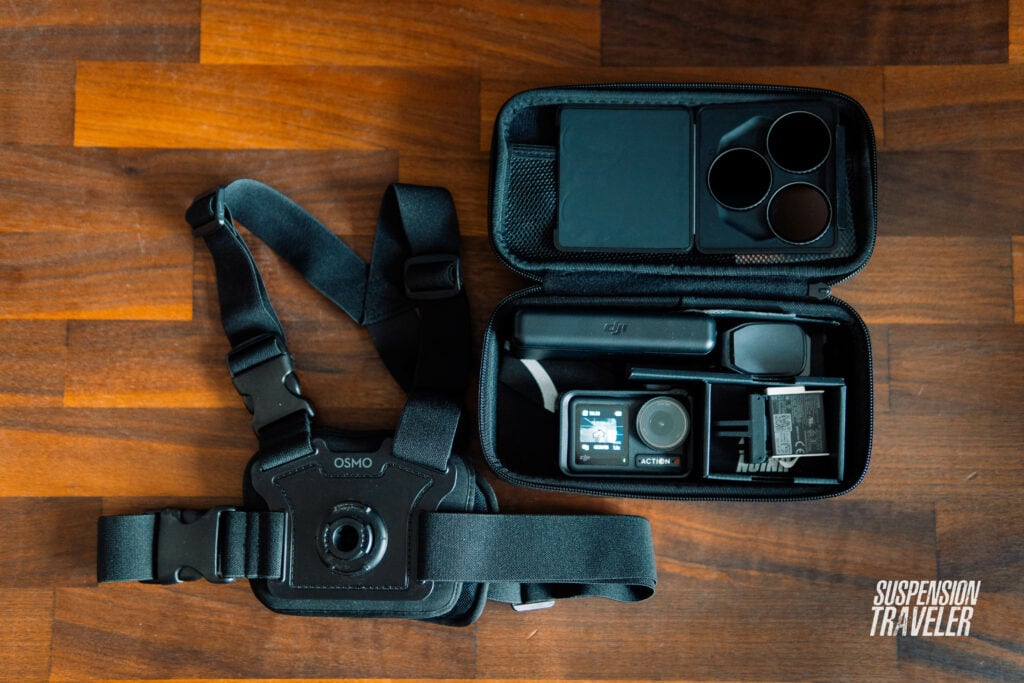
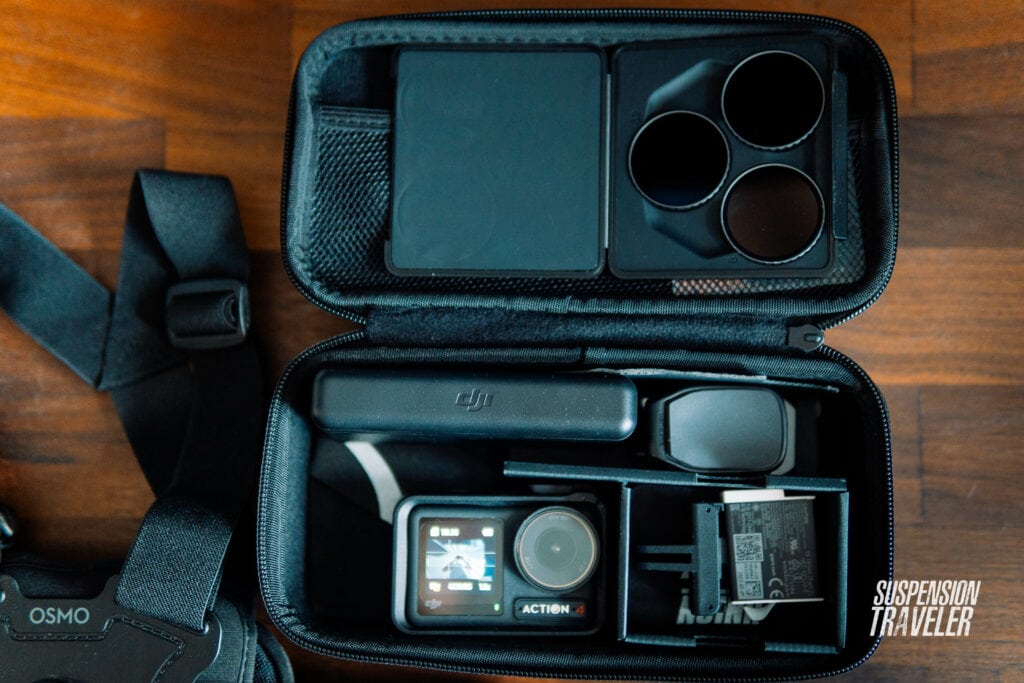
Like many action cams, it’s using the “GoPro feet”, those two fingers on the bottom of modern action cams. Meaning it’s compatible with most GoPro mounts.
To give you an idea of a variety of useful gear, I listed all the best Osmo Action 4 accessories for mountain biking in this article. Basically my camera setup.
4K Vertical Video
The new DJI drones can tilt their cameras 90°, the OA4 can mount to its magnetic adapter at an 90° to allow capturing native 4K vertical video. No more cropping or weird mounting contraptions.
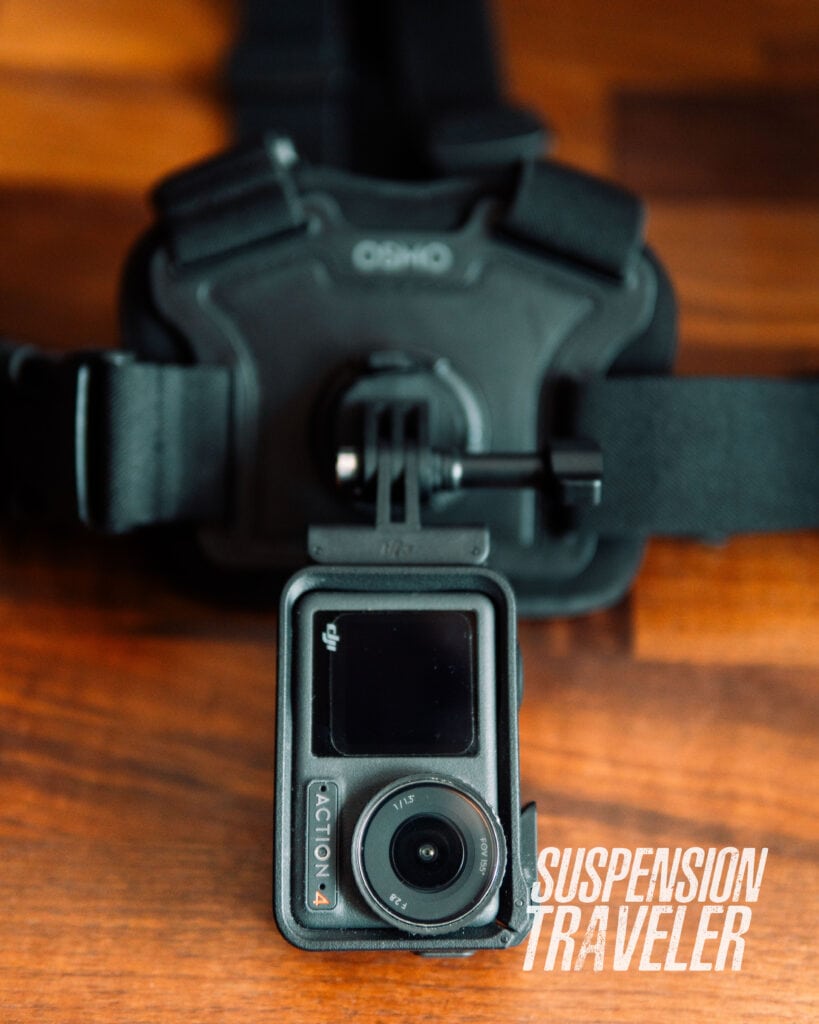
Just snap it into place using the magnetic cage, and you’re all set up to film your next Instagram, YT Shorts or Tik Tok clip. If that’s your jam.
Mimo App
Alternatively, you can leave the camera where it is and set it up using your phone while seeing the currently mounted camera angle. Even while recording, which the GoPro app weirdly doesn’t do.
The app provides all the video settings and lets you quickly swap between recording modes, even to the Livestream mode (which isn’t worth further mention for outdoor use).
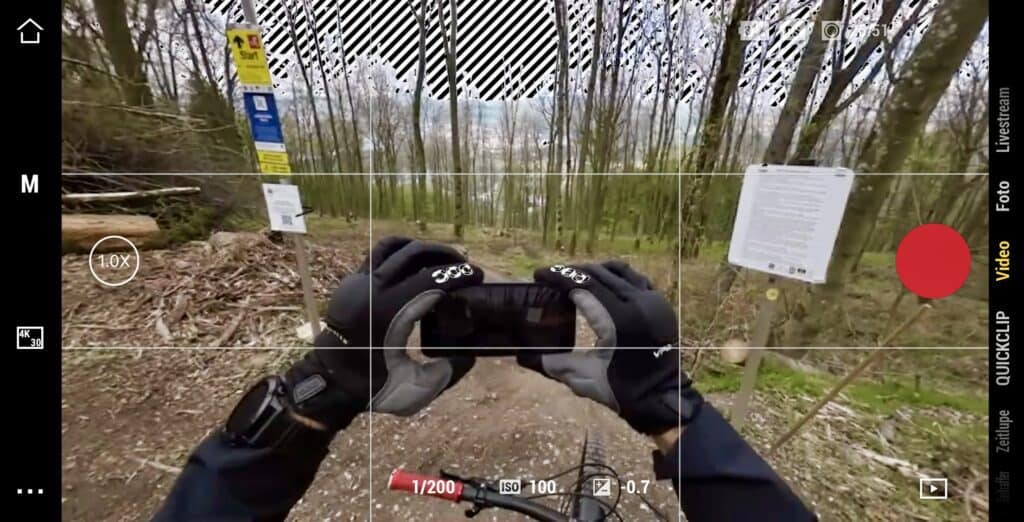
overheating
The Osmo Action 4 has no overheating issues at all. Even with all that internal processing, it will only get warm to the touch but not to concerning levels, even in hot summer weather.
Over the years there’ve been some controversial topics concerning action cameras. None more attention-grabbing and sticky than the overheating issue.
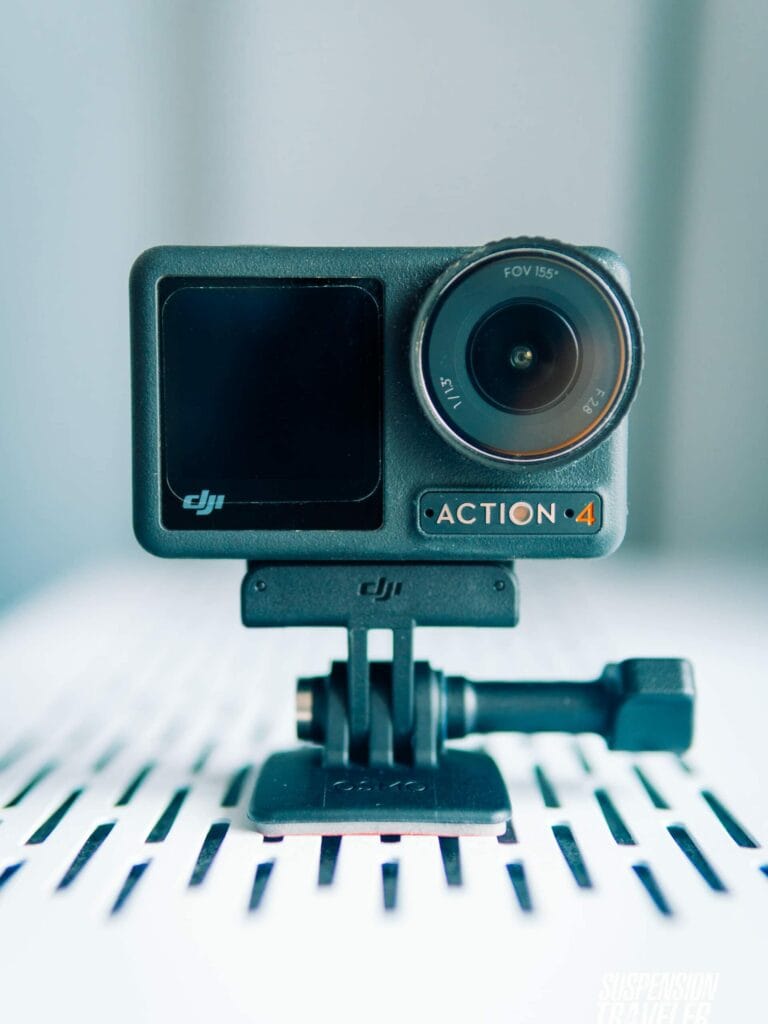
To be totally honest, I’ve never had that happen even once during normal use. Not on any GoPro, not on any DJI. And I’ve used the last couple of models a lot.
Normal use means outdoors, with normal airflow. I don’t know what all these reviewers are doing to get it to overheat. Maybe charging and recording 240 fps at the same time while having it sit stationary on a desk?
Conclusion

Is the DJI Osmo Action 4 worth it?
The OA4 is super easy to use and has arguably the best video quality of any action camera out currently. Thanks to more settings, better hardware and software support.
With a wide selection of first and third-party accessories, 4K vertical mode and magnetic mounts for quick and easy dismount out on the trails. All at a competitive price.
What more can you ask for?
